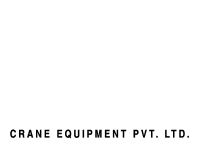Crane manufacturing has undergone significant transformations over the decades, evolving from simple lifting mechanisms to sophisticated machines capable of handling the most demanding industrial tasks. At Bright Crane Manufacture, we pride ourselves on being at the forefront of these advancements, consistently innovating to meet the changing needs of our clients. In this blog, we’ll explore the evolution of crane manufacturing, the latest innovations in the industry, and what the future holds for this essential field.
The Evolution of Crane Manufacturing
The history of cranes dates back to ancient civilizations where rudimentary cranes, operated by human or animal power, were used to build monumental structures. Over time, the Industrial Revolution brought about significant changes, introducing steam-powered cranes and later, electric-powered models. These innovations increased efficiency and load capacities, setting the stage for modern crane technology.
Today, crane manufacturing involves highly specialized processes that integrate advanced materials, precision engineering, and cutting-edge technology. The result is a range of cranes designed to meet specific industrial needs, from lightweight, portable models to massive, heavy-duty machines capable of lifting hundreds of tons.
Key Innovations in Modern Crane Manufacturing
Automation and Control Systems:
Modern cranes are equipped with sophisticated control systems that enhance precision and safety. Automated features such as programmable logic controllers (PLCs) and remote operation capabilities allow for more accurate load handling and reduced risk of human error.
Advanced Materials:
The use of high-strength, lightweight materials like carbon fiber and advanced alloys has revolutionized crane manufacturing. These materials provide greater strength and durability while reducing the overall weight of the crane, improving efficiency and ease of transport.
Energy Efficiency:
With a growing emphasis on sustainability, crane manufacturers are developing energy-efficient models that consume less power and reduce operational costs. Electric cranes, regenerative braking systems, and energy recovery technologies are becoming increasingly common in the industry.
Customization and Versatility:
Today’s cranes are highly customizable, allowing manufacturers to tailor designs to specific applications and environments. Whether it’s a compact jib crane for a small workshop or a massive gantry crane for shipbuilding, the ability to customize ensures that each crane meets the unique needs of its users.
Safety Enhancements:
Safety remains a top priority in crane manufacturing. Innovations such as overload protection, anti-sway systems, and real-time monitoring technologies help prevent accidents and ensure the safe operation of cranes in various conditions.
